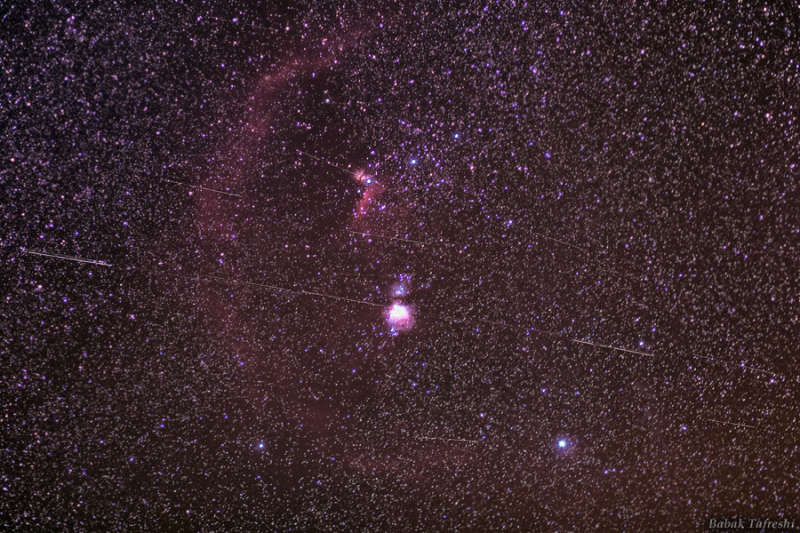
|
Credit & Copyright: Babak Tafreshi
(TWAN)
Explanation:
Put a satellite
in a circular orbit about 42,000 kilometers from the
center of the Earth (36,000 kilometers or so above the surface)
and it will orbit once in 24 hours.
Because that matches Earth's rotation period, it is known as
a geosynchronous orbit.
If that orbit is also in the plane of the equator,
the satellite will hang in the sky over a fixed location in
a
geostationary orbit.
As predicted in the 1940s by futurist
Arthur C. Clark,
geostationary
orbits are in common use
for communication and weather satellites,
a scenario now well-known to astroimagers.
Deep images of the night sky made with telescopes that follow
the stars can also
pick up geostationary
satellites glinting in sunlight still shining
far above the Earth's surface.
Because they all move with the Earth's rotation against the
background of stars, the satellites leave trails that
seem to follow a highway across the celestial landscape.
For example, in this wide view of the nearly equatorial
Orion region,
individual frames were added to create a 10 minute long exposure.
It shows Orion's belt stars and
well-known nebulae along with many
2.5 degree long geostationary satellite trails.
The frames are from an ingenious movie, featuring the
geostationary
satellite highway.
|
January February March April May June July August September October November December |
| |||||||||||||||||||||||||||||||||||||||||
NASA Web Site Statements, Warnings, and Disclaimers
NASA Official: Jay Norris. Specific rights apply.
A service of: LHEA at NASA / GSFC
& Michigan Tech. U.
Based on Astronomy Picture
Of the Day
Publications with keywords: satellite
Publications with words: satellite
See also:
